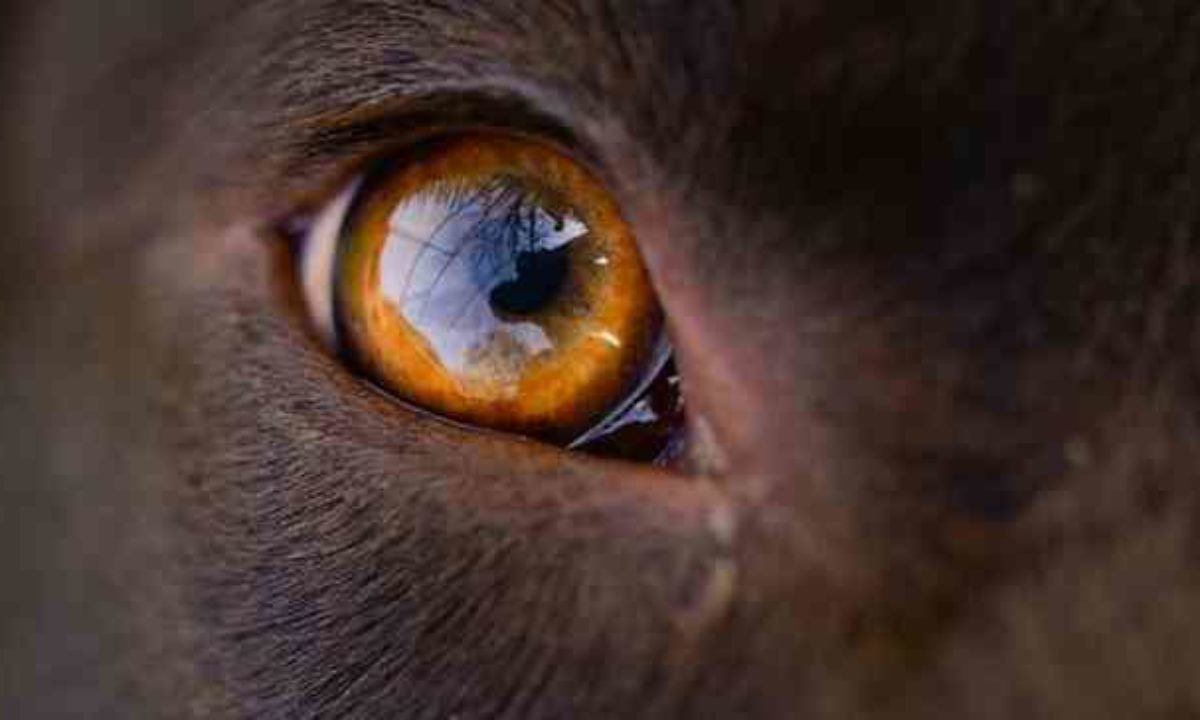Why does my dog have tears in her eyes
It is common to see tears in a dog's eyes, which we instinctively translate as an expression of great sorrow, as it is in humans. In truth, tears in dogs are a symptom of something else, and to confuse them with grief is to anthropomorphize them, i.e. to attribute human qualities to their dog.
In fact, humans are the only living beings that communicate their emotions by crying loudly, whether they are afraid, happy or angry. In animals, sadness, joy and distress can also provoke crying, but they do not translate into tears.
Tears in dogs
In dogs, abnormal tear flow is always caused by eye diseases and not by any emotion. The flow of tears on the dog's face, a phenomenon that has the medical name of epiphora, is a defense mechanism triggered automatically by the dog's organism that tries to protect itself from an infection.
Tears have the function of washing the eye to evacuate foreign bodies or pathogens that may stick to it. A common cause of epiphora in dogs is conjunctivitis, which also causes swelling of the eyelid, reddening of the sclera, pain and itching, and other symptoms of inflammation.
Conjunctivitis is an inflammation of the conjunctiva, the translucent tissue that covers the inside of the eyelids to insulate the eyeball from external pathogens. It is not a disease in itself, as conjunctivitis can be caused by multiple environmental, pathological and even congenital factors.

Causes of lacrimation in dogs
There are two types of epiphora in dogs, the so-called active one, caused by a hypersecretion of tears, and the so-called passive one, caused by a bad drainage of tears.
The external causes of the epiphora of the dog
Since the purpose of tears is to clean the dog's eye, they are automatically secreted in abundance when the dog is a victim of aggression. In this case, the owner can detect the disturbing element by analyzing the environment of his dog, especially when the aggression comes from external substances or smells.
Smoke, strong wind or dust clouds are elements that can make your dog cry to protect his cornea. A foreign object, trauma or an irritant sprayed into the dog's eye can also cause a flood of tears to soothe the irritation.
Congenital causes of epiphora in dogs
Brachycephalic breeds are likely to have disorders of the lachrymo-nasal system which allows the evacuation of tears. Pugs, Boxers, Bulldogs or Pekingese will have a greater tendency to cry loudly because of the specific morphology of their skull which prevents the proper flow of their tears (passive epiphora).
Some small breeds, such as the Poodle and the Bichon, can also present this type of congenital disorder because of the very bulging shape of their skulls. There is a condition called ectopic eyelash, also hereditary, which involves a misplacement of the dog's eyelashes that irritate the eye and cause persistent tearing. This disorder can only be corrected by surgery, otherwise the eyelashes grow back again and again, which can cause very serious eye infections. Distichiasis is a relatively similar form of eyelash implant anomaly that irritates or injures the dog's eye.
Similarly, entropion and ectropion are two types of eyelid deformities that can cause inflammation of the cornea and make your dog cry. Trichiasis, which should be distinguished from ectopic eyelashes, is an irritation of the cornea caused by normally implanted hairs. Corneal dermoid, also known as palpebral dermoid, is an abnormality that causes a fragment of hairy dermis to develop on the cornea or eyelid of the dog, irritating the eye.
Bacterial causes of dog epiphora
Some ophthalmologic diseases can also cause various ocular symptoms, including excessive tearing. This is the case with keratoconjunctivitis sicca, a very common condition in dogs that is caused by insufficient tear production.
In this case, the dog cries a thick, opaque substance, which accompanies an irritated, red conjunctiva and an opacifying cornea. Blepharitis, an inflammation of the eyelids, uveitis, an inflammation of the inner lining of the eye, and corneal ulcers are all diseases that can make your dog cry.
Viral causes of dog epiphora
Some viruses cause nasal and ocular symptoms, including the famous distemper that causes distemper. This disease causes watery eyes and a large amount of nasal discharge, sneezing being its main vector of contamination.
Other symptoms of distemper include fever, coughing and neurological signs when the virus has reached the dog's central nervous system. It is a serious and often lethal disease, to which a vaccine is highly recommended for all dogs to prevent its spread.
Rubarth's Hepatitis is another viral disease that typically manifests itself with anorexia, apathy and conjunctivitis that often complicates into glaucoma. Symptoms then progress to bleeding disorders and liver dysfunction that can leave the animal with lifelong sequelae. Often fatal, this disease includes a lightning form, a severe form and a chronic form, against which there is no treatment.

The crying dog
If your dog's tears are not associated with his emotions, he is nevertheless capable of crying to express his discomfort. A dog's crying is manifested by long, plaintive barks that deceive no one, as well as high-pitched whines, various complaints... and a number of "non-verbal" signals.
It is often possible to read your dog's sadness on his face, as he often displays expressive facial expressions to communicate with his peers, as well as with his owner. His posture also says a lot: if your dog remains prostrate on himself, isolates himself or shows signals of appeasement, it's because something is bothering him.
A closer look at dog psychology shows that dogs have many ways of crying, without actually shedding tears. If you want your dog to stop complaining or suffering in silence, you need to take the time to look at the causes of his discomfort, and not just assume that your dog is "jealous", "temperamental" or "resentful", emotions that do not exist in him.
Also, don't assume that your dog is crying for your attention on a whim: if he's asking for it, it's because he needs it. A dog that cries for attention or games should not be reprimanded, but the owner should reconsider and consider that, despite all his efforts, he probably does not spend enough time with his dog or has missed some of his needs.
It is also possible that your dog is crying because he feels discomfort or physical pain, as is unfortunately often the case with old dogs who howl all night because of their arthritis. Older dogs also gradually lose their senses and may understandably feel completely confused when their sight, hearing and sense of smell begin to fail.
They are then likely to cry to express their anguish and seek comfort from their beloved owner. In any case, a dog only cries when he has something to say. So never ignore him, and it's a good idea to start with a veterinary visit to rule out any injuries or illnesses that might be causing him pain.
Tears and crying are two completely different phenomena that should not be confused in order to find the cause of the animal's discomfort. Tears are often a sign of an ocular disorder that may be congenital, caused by a foreign body or caused by a pathogen (bacteria or virus).
In case of disease, there are often associated symptoms, but this is not always the case and it is not a good idea to wait too long before taking your dog to a veterinarian. Worsening eye infections could cost your dog his eyesight, and some viruses that cause watery eyes, such as distemper, could cost him his life.
An element often forgotten in the education process
Educating your pet is good, but you must also think about protecting your dog against the hazards of life. For that, think of subscribing to an insurance for your dog.

